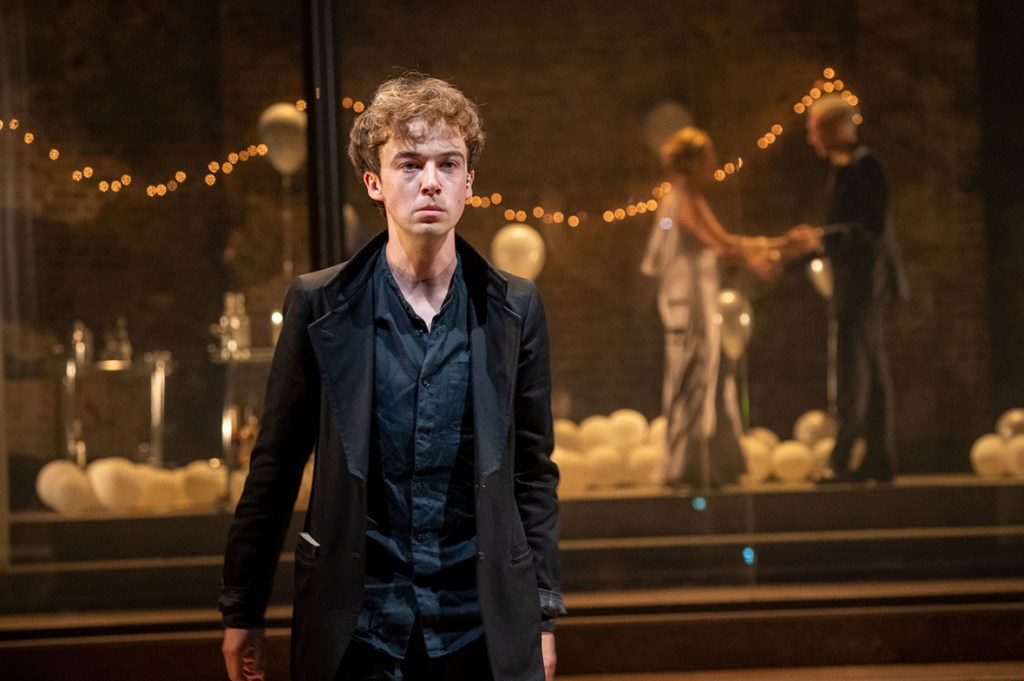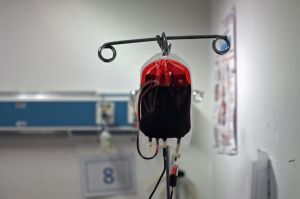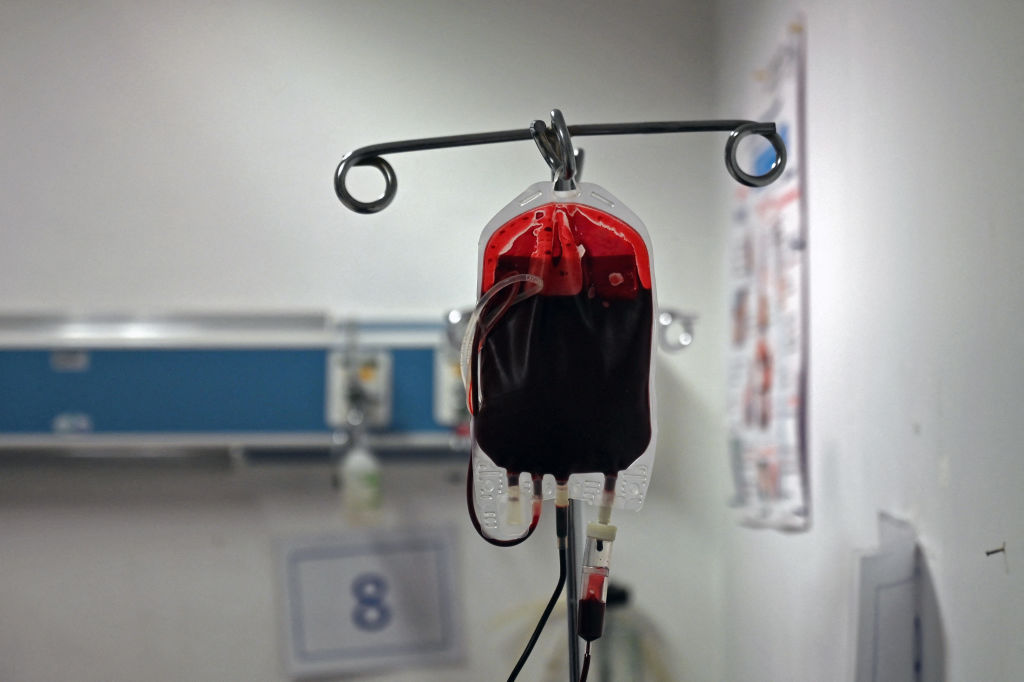On a Saturday in August, stuck in Manhattan and growing less enamored of the thought, I holed up at the Park Avenue Armory to catch English director Robert Icke’s Hamlet (2015) and Oresteia (2017), playing in repertory. Icke is a darling young thing on the British theater scene, “acclaimed,” as the program informs us, “for his intelligent and accessible productions” of classic texts. Hamlet runs for three hours and forty minutes, Oresteia for three fifteen, which gives you some idea of what is meant (or not) by “accessible.” These are big, bold productions. But for what it’s worth, the cavernous Wade Thompson Drill Hall proved accessible to a packed crowd.
Commentators have remarked on the parallels between the House of Atreus, wracked with internecine strife, and the bloody Denmark of Hamlet. Judicious casting across the two shows — only Klytemnestra (Anastasia Hille) in Oresteia and Hamlet (Alex Lawther) and Gertrude (Jennifer Ehle) are one-off roles — signals that Icke has done his homework. Angus Wright as Claudius and Agamemnon, fratricide and filicide, is the crooked moral backbone of either play; Claudius is a sly dissembler and Agamemnon a relentlessly vain general, but Wright conveys nobility in both. Luke Treadaway makes a fair case that, as an avenging son, Laertes is just Orestes with his man-bun let down. Kirsty Rider has strong turns as Ophelia and Orestes’s Doctor. I could go on, but this is a well-rounded, well-directed ensemble — and well-conditioned, of course, to put on seven hours of theater in a day.
Icke’s Oresteia breaks from Aeschylus’ sharply; this is no sin per se, as Roman drama attests. He preserves the three sections of Aeschylus’ trilogy: Klytemnestra’s murder of Agamemnon on his homecoming (Agamemnon), Orestes’ murder of Klytemnestra (Libation Bearers) and his subsequent arraignment by the avenging spirits of the underworld (Eumenides). But Icke has begun with a fourth section staging Agamemnon’s sacrifice of his daughter Iphigenia, the pretext for his murder by Klytemnestra. This seeming expansion actually narrows the scope of the tragedy: by closing off what Aeschylus left open-ended, Icke gives us a single-family drama rather than an intergenerational one. (There’s no mention of the crimes of Atreus, father of Agamemnon and Menelaus.) The difference in scale is as of Shakespeare’s Henriad to, well, Hamlet.
There is also a radical shift in framing. Rather than a twelve-person Greek chorus, Icke directs and focuses the audience’s attention through a clinical interview of Orestes by the Doctor. The story is told through flashbacks occasioned by the interview, punctuated by time-of-death stamps and articles of evidence announced on ticker-tape upstage. Aeschylus’ Oresteia has deep religious undercurrents, and I was impressed by how Icke endows the furniture of contemporary ritual — technology, medicine, legal proceedings — with a distinct gravitas.
In the gripping final courtroom scene, Orestes’ testimony comes up against forces beyond his control. But the framing device ultimately puts a psychic barrier between the audience and the collected events on stage. Like the frequent signposting (“This has all happened before”) and the penchant for special effects, it makes this play more an astute commentary on Aeschylus’ work than a faithful transmission of it.
The Hamlet Icke gives us is cask-strength. He has picked out the darker, hair-raising colors in Shakespeare’s palate, and he paints that tragedy all across the stage. The opportunities for dramatic irony — deceit, espionage, the band of players, the grave scene — are all exploited for maximum drama. Icke even throws in a few wrinkles of his own. Guildenstern is now a girl, an old flame (“My lord, you once did love me”), which only ratchets up the tension. Later, the broken Ophelia reveals fresh, self-inflicted wounds for each of the flowers — rosemary for remembrance, pansies for thoughts — she offers the company just before her death. They could only be flowers for Hamlet.
Icke makes judicious use of technology here. The ghost first appears on CCTV, during the night shift; later, the play-within-the-play is a red-carpet event, and we look to a screen upstage for live footage of the royal family’s reactions. Icke’s direction, even when it lacks grace, is still endearing, in a soap-opera way. See the abrupt intermission just after Claudius interrupts the play. But when the director hits the right register, the results are splendid, as in the marvelous dramatic effect (no spoilers!) achieved in the climactic prayer scene.
I wouldn’t be surprised if either of these thoughtful productions returns to New York in coming years. And if the Armory keeps up its strong programming, these Manhattan summers, too much in the sun, will be a bit more bearable.

























